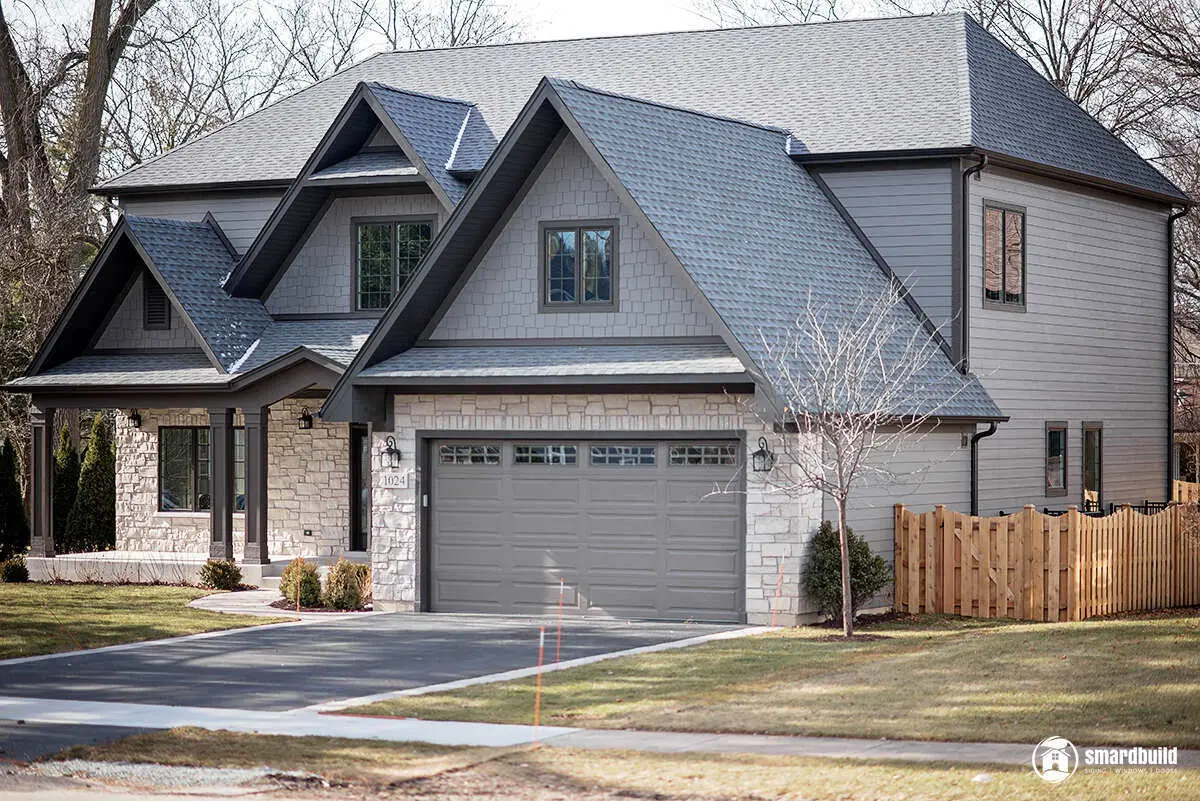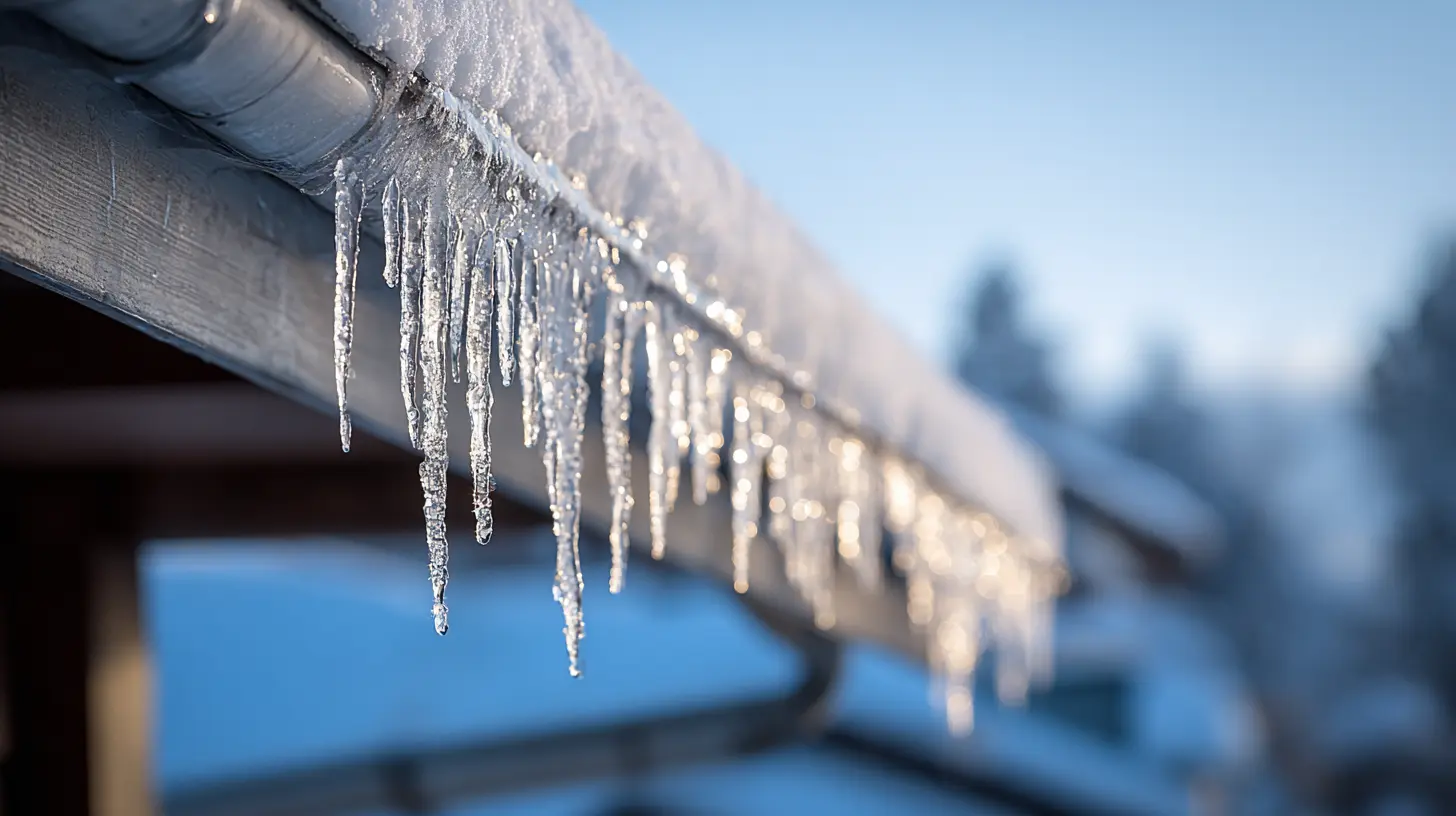Homeowners choose vinyl siding because it's durable and affordable. Vinyl siding is also available in an impressive array of colors and styles, so you can easily find the perfect fit for your home. However, if your home's vinyl siding is warping, buckling, or bubbling, that's a big problem.

Some vinyl siding can be prone to becoming wavy, or warping, over time for several reasons, leaving your home vulnerable to the elements and possibly causing more damage than what can be seen on the surface. SmardBuild is your Naperville, Arlington Heights, Addison Heights, Woodridge, and greater Chicagoland siding expert. We're here to explain what causes vinyl siding to buckle and become wavy, what can happen after your siding becomes wavy, and how to avoid wavy siding from the start.

There are a few reasons siding can become wavy. Here are the top four common culprits for wavy siding:
Vinyl siding should expand when the temperature is high and contract when it's cold. This expansion and contraction is perfectly normal, and with proper installation, shouldn't cause an issue. However, if your area experiences more extreme temperature changes, vinyl siding may simply be the wrong material for your home.
If you're remodeling the exterior of your home, talk to your remodeler about replacing your siding with fiber cement siding, such as James Hardie® siding. Vinyl siding is perfectly fine for many regions with less extreme temperature changes, but other regions require home building materials that offer more durability.
If the siding is properly installed, it will expand and contract without appearing wavy. Improperly installed siding will become wavy and continue to worsen over time.
How will you know if your siding is installed properly? Besides hiring the right vinyl siding installation expert from the start, there is also the placement of the nails. Vinyl siding features oval-shaped holes for installation to allow for expanding and contracting. If the nail isn't placed in the center or if it's nailed down too tightly, it's not allowed to move like it should, making your vinyl siding look uneven over time.
Another installation issue is the placement of the panels. Vinyl siding panels shouldn't be placed too closely to trim around windows or corners because this doesn't leave enough room for expanding, leaving your vinyl siding susceptible to becoming wavy.
As the old adage goes, "You get what you pay for." Poor quality siding tends to be thinner and less durable. Even under normal temperature fluctuations and with proper installation, budget vinyl siding can become wavy sooner rather than later. Investing in higher quality vinyl siding can keep your home looking great and protect your home from the elements for much longer.
The problem with dark vinyl siding is not only that its color tends to fade quicker than lighter colors, but that it can also be more prone to warping and becoming wavy. This is because dark colors absorb heat at a higher rate, which can lead to more extreme expanding and contracting, compromising the integrity of the material. If you're hoping to get the bold style of dark siding, invest in James Hardie® fiber cement siding. The color and integrity of the siding will hold up decades longer than vinyl siding.

Though many people can identify wavy vinyl siding on sight and find it unsightly, there are problems that occur beneath the surface that you can't see—at least not right away. Warped and wavy siding sets off a chain of events that can lead to major home repairs if it's not addressed right away.
When your vinyl siding becomes buckled and wavy, this changes the alignment of your panels. Misaligned panels are not only unsightly, but they also present problems during an exterior remodel. When siding panels are too close, it can be difficult to trim around the corners and windows. Proper installation ensures that the vinyl siding has enough space to move around, ensuring your exterior remodeling project will go according to plan and with less obstacles.
Wavy vinyl siding leaves space between itself and the rest of the home. This means that rain and moisture are getting in where it definitely shouldn't, leaving your home vulnerable to rot and mold. You may not see these effects until it's a much bigger problem, leaving you to pay for not only new siding, but repairs from water damage and even mold mitigation.
Warped or melted vinyl siding can leave your home's structure exposed, allowing water to seep in and create the perfect environment for insect infestations. In addition to costly repairs, as mentioned above, you'll also have to hire a specialist to address the infestation before construction can even begin.
If your home's vinyl siding has begun to warp or become wavy, there's no way to straighten it out. Leaving the problem to worsen will lead to more costs later on to repair what's been affected beneath the surface. Replace your siding as soon as possible, invest in better materials, and hire a siding expert to complete the work for you. Replacing your vinyl siding yourself may seem simple enough, but it's actually a more intricate job than many think. You may end up where you started only a few years later with wavy siding that will need replacement once again.

There are several types of siding you could choose for your Chicago area home, including fiber cement siding. Fiber cement siding, like James Hardie® siding, does not present the same challenges as vinyl. It doesn't warp, it requires minimal maintenance, and it better protects your home from the elements. Choosing fiber cement keeps your home looking terrific for longer—even up to 50 years! And, because James Hardie® uses ColorPlus® Technology to apply the color rather than painting, you can choose even the darkest shade of siding without worrying about fading.
Because energy-efficient windows reflect more heat than ever before, some homeowners notice increased melting and warping around their window frames. Although there are many benefits to choosing energy-efficient windows, you'll want to make sure your siding can withstand the reflected heat. Diffuse this issue with landscaping that will absorb heat, installing specialty reflective shades, or opting for a material that won't melt, such as James Hardie Siding.
Bad vinyl siding installation is the culprit for the majority of warped and wavy siding. Hire an expert vinyl siding contractor with a track record for quality work. Smardbuild uses only the best materials and methods to install vinyl and fiber cement siding to ensure your investment will last. You can also count on Smardbuild to stay within your budget and your timeline so your remodel will be completed as expected, with no surprise fees or delays. Contact Smardbuild to learn more about the process and to schedule a consultation.


